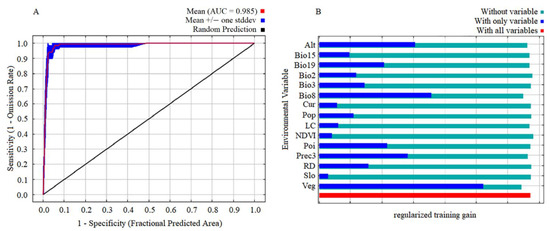Habitat connectivity is indispensable for the survival of species that occupy a small habitat area and have isolated habitat patches from each other. At present, the development of human economy squeezes the living space of wildlife and interferes and hinders the dispersal of species. The Przewalski’s gazelle (Procapra przewalskii) is one of the most endangered ungulates, which has experienced a significant reduction in population and severe habitat shrinkage. Although the population of this species has recovered to a certain extent, human infrastructure severely hinders the gene flow between several patches of this species. Therefore, we used the maximum entropy (MaxEnt) model to simulate the habitat suitability of the Przewalski’s gazelle. In addition, we combined habitat suitability and ecological characteristics of the species to obtain eight habitat patches. Finally, we used the least-cost path (LCP) and circuit theory based on the resistance model to simulate the landscape network of this species. The results showed that habitat patches and connectivity in the east of the Qinghai Lake were crucial to the communication between populations of the Przewalski gazelle, and our study provided important reference for the distribution of important habitats and the construction of corridor between patches. Our study aimed to provide habitat networks and maintain landscape connectivity for achieving the fundamental goal of protecting and revitalizing populations of the Przewalski’s gazelle.

Figure 2
This is an open access article distributed under the Creative Commons Attribution License which permits unrestricted use, distribution, and reproduction in any medium, provided the original work is properly cited
This result was published in Sustainbility with the title of " Resistance-Based Connectivity Model to Construct Corridors of the Przewalski’s Gazelle (Procapra Przewalskii) in Fragmented Landscape".
The link below will guide you to the reading:
